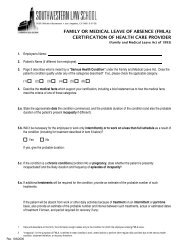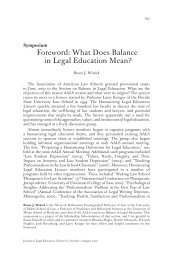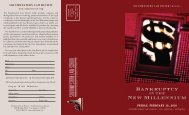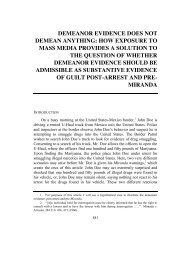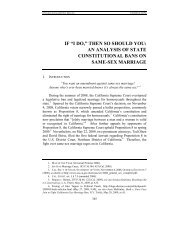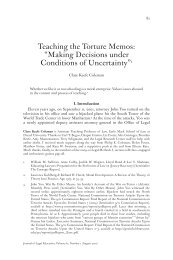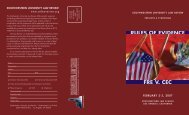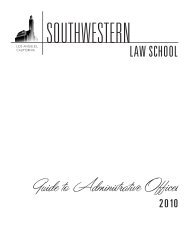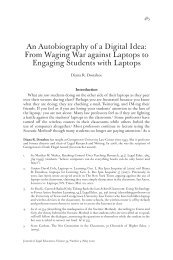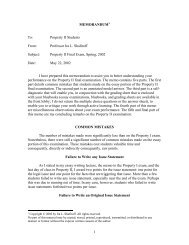What is Art? - Southwestern Law School
What is Art? - Southwestern Law School
What is Art? - Southwestern Law School
- No tags were found...
Create successful ePaper yourself
Turn your PDF publications into a flip-book with our unique Google optimized e-Paper software.
WHAT IS ART? 139New Zealand that were similar to those of UK’s 1988 Act. The courtdetermined that Fr<strong>is</strong>bees were not sculptures, because “It seems to usinappropriate to regard utilitarian objects such as plastic flying d<strong>is</strong>cs,manufactured as toys, by an injection moulding process, as items ofsculpture for the purposes of [New Zealand’s] Copyright Act.”A similar case was tried in England in 1995 116 to decide whetherscalloped shapes of die-cast moulds of heating plates for sandwichtoasters were in fact casts or moulds for “sculpture”. The trial judgedetermined that moulds were “sculpture” within the meaning of the1988 Act, but the Court of Appeal and the UK Supreme Court inour Star Wars trials determined they were not; and in doing so drewupon the Conc<strong>is</strong>e Oxford Dictionary’s definition of “sculpture”: “<strong>Art</strong>of forming representations of objects etc or abstract designs in theround or in relief by ch<strong>is</strong>elling stone, carving wood, modelling clay,casting metal, or similar processes; a work of sculpture.” These courtsespecially stressed the significance of the first word, “<strong>Art</strong>”, in the dictionarydefinition. Moreover, the UK Supreme went further, determiningthat “No ordinary citizen—indeed no ordinary lawyer—would regarda sandwich toaster or any part of it as a work of sculpture—evenif it did produce ‘scalloped’ sandwiches. So why should a copyrightlawyer take a different view? A total or almost total emphas<strong>is</strong> onthe manner of creation . . . produces a result which offends commonsense and in our view <strong>is</strong> wrong. There must be some element of art<strong>is</strong>ticexpression however unsuccessful.”A more recent Engl<strong>is</strong>h case came close, in the UK Supreme Court’sjudgment, to being “the only suggested definition or near-definitionthat has not attracted adverse comment from any quarter” 117 . It concerneda claim to art<strong>is</strong>tic copyright in moulds used for making doublebarrelledhypodermic-type syringes, which claim the court rejected;and observed “The law has been bedevilled by attempts to widenout the field covered by the Copyright Acts. It <strong>is</strong> not possible to saywith prec<strong>is</strong>ion what <strong>is</strong> and what <strong>is</strong> not sculpture, but I think MrMeade was close to the heart of the <strong>is</strong>sue. He suggested that a sculpture<strong>is</strong> a three-dimensional work made by an art<strong>is</strong>t’s hand. It appears tome that there <strong>is</strong> no reason why the word ‘sculpture’ in the [UK’s] 1988Act should be extended far beyond the meaning which that word has toordinary members of the public.” 118116. Breville Europe Plc v Thorn EMI Domestic Appliances Ltd [1995] FSR 77.117. “Any quarter” presumably means any advocate representing any party beforethe UK Supreme Court.118. Metix (UK) Ltd v G H Maughan (Plastics) Ltd [1997] FSR 718.



